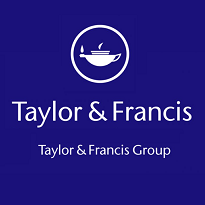| مشخصات مقاله | |
| انتشار | مقاله سال ۲۰۱۷ |
| تعداد صفحات مقاله انگلیسی | ۱۶ صفحه |
| هزینه | دانلود مقاله انگلیسی رایگان میباشد. |
| منتشر شده در | نشریه تیلور و فرانسیس |
| نوع مقاله | ISI |
| عنوان انگلیسی مقاله | Risk management workshop application: a case study of Ahwaz Urban Railway project |
| ترجمه عنوان مقاله | کاربرد کارگاه مدیریت ریسک: مطالعه موردی پروژه راه آهن شهری اهواز |
| فرمت مقاله انگلیسی | |
| رشته های مرتبط | مهندسی عمران، مدیریت |
| گرایش های مرتبط | مهندسی راه و ترابری، مدیریت پروژه |
| مجله | مجله بین المللی مدیریت ساخت و ساز – International Journal of Construction Management |
| دانشگاه | School of Civil Engineering – University of Tehran – Tehran – Iran |
| کلمات کلیدی | مدیریت پروژه؛ مدیریت ریسک؛ تحلیل ریسک؛ مجموعه های فازی؛ مطالعه موردی |
| کلمات کلیدی انگلیسی | Project management; risk management; risk analysis; fuzzy sets; case study |
| شناسه دیجیتال – doi |
http://dx.doi.org/10.1080/15623599.2017.1325112 |
| کد محصول | E8501 |
| وضعیت ترجمه مقاله | ترجمه آماده این مقاله موجود نمیباشد. میتوانید از طریق دکمه پایین سفارش دهید. |
| دانلود رایگان مقاله | دانلود رایگان مقاله انگلیسی |
| سفارش ترجمه این مقاله | سفارش ترجمه این مقاله |
| بخشی از متن مقاله: |
| Introduction
The nature of various activities involved in construction projects is determined by many risks and inherent uncertainties in every phase of the project lifecycle (Imbeah & Guikema 2009; Abdelgawad & Fayek 2012; El-Sayegh & Mansour 2015). The increasing complexity and dynamism of construction projects, however, have led to substantial uncertainties and the revitalization of subjectivities in the risk analysis process (Nieto-Morote & Ruz-Vila 2011; Gan & Xu 2013). This aside, the environment in which construction industry operates is usually exposed to a high degree of risks and faces a significant number of uncertainties (Tserng et al. 2009; Marle & Vidal 2014). Having these impeding features in mind, one would not find it surprising that, over the past decade, many projects have experienced large variations in cost and schedule which, of course, greatly contributes to their failure (Liu et al. 2011; Chen et al. 2012). In order to increase control in the area of such projects, risk management (RM), as the art and science of anticipating and planning for future uncertain events, is vital to understand and mitigate or control risks (Alarcon et al. 2011; Yoon et al. 2014). RM also necessitates a comprehensive project surveillance and monitoring since it is imperative that project managers should consider all possible risks to establish corrective actions in the right time in order to improve the chance of success and minimize the risks of project failure (Ahmed et al. 2007; Skorupka 2008; Imbeah & Guikema 2009; Kuo & Lu 2012; Choudhry & Iqbal 2013; Mohammadi & Tavakolan 2013;Wambeke et al. 2014). Therefore, in both preemptive and inventive senses, RM is essential for any given construction project to fulfil its objectives (Ezeldin & Orabi 2006; Hwang et al. 2014). Furthermore, when it comes to cost and profit analysis, which is, of course, the keystone of any given construction project, and, in these lines, to enhancing the profitability of a construction company, those risks that affect the profit of the company must be controlled as part of their long-term business planning (Wang et al. 2009; Allan & Yin 2010; Yoon et al. 2014). Hence, given all the previously mentioned dimensions and aspects involved in it, the construction company is one of the major beneficiaries of the RM implementation simply because it is exposed to the highest degree of risks (Mohamed et al. 2015). As a result, RM is important for each stakeholder benefits from project’s success. Therefore, every stakeholder in the project expects that project risks be managed properly. |
